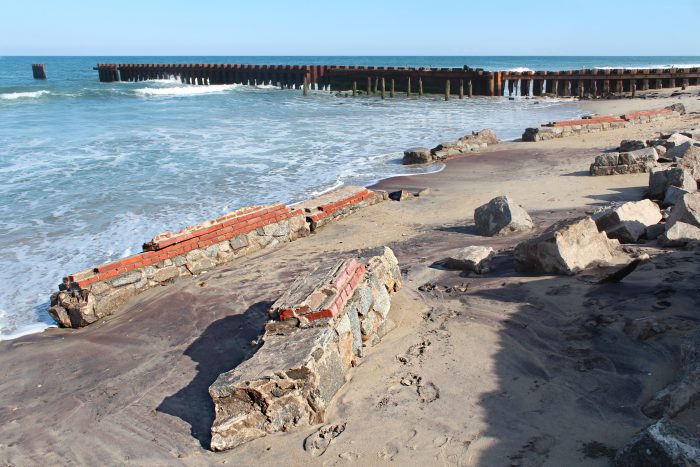
Segments of the original brick fence foundation that bordered the Cape Hatteras Lighthouse were exposed during a recent wave of erosion, and are currently visible to beachgoers at the Old Lighthouse Beach in Buxton.
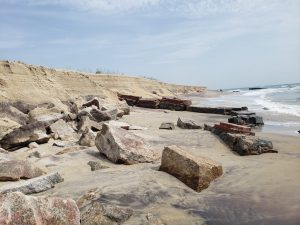
The clusters of brick and stone were first installed in 1871, a year after the Cape Hatteras Lighthouse was built, and although parts of the fence foundation were removed in order to move the structure in 1999, a section of the fence was left underground, and remained generally invisible to the public.
Last week, a section of the beach was “scarped,” or eroded, leaving behind a three-foot sandy cliff, as well as patches of brick and stone that once served as the base for the wrought-iron lighthouse border.
“These footers and capstones were left buried under the sand, and were exposed by Hurricane Sandy in 2012 and other storms since,” says John M. Havel, Cape Hatteras Lighthouse Researcher and Board Member of the Outer Banks Lighthouse Society. “Many of the footers and capstones were removed in 1999 to allow the lighthouse to pass…. But these remained.”
When the lighthouse was located on the edge of the Atlantic Ocean, the fence that bordered it was shaped like an octagon, and extended 45 feet from the lowest step of the lighthouse. The roughly three-foot-tall brick foundation served as a base for the iron fence, (in order to hold it steady and in place), and while the fence deteriorated over the years and rusted away by the 1920s, the sturdy engineering ensured that the brick foundation remained in place.
“The brick itself was almost never ever visible, but [the fence and the foundation] were amazingly engineered,” says Havel. “They knew what they were doing – they knew the math, and the science, and they knew what was going to hold, and what wasn’t.”
“Before [the foundation] was broken up for the lighthouse move, it had never moved an inch in the roughly 130 years since it was first built.”

In 1999, the Cape Hatteras Light Station, which consists of seven historic structures, was successfully relocated 2,900 feet from its 1870 site, due to a growing threat of shoreline erosion.
Havel says that plans are in the works to create a replica of the original fence for the “new” lighthouse site, which is slated to occur in 2021. “That same Victorian-style fence is only found in one other place that I’ve seen in America – and I’ve researched this for the past 10 years – and that is at the White House, the Treasury Building, and the Renwick Gallery [in Washington D.C.], all within one block of each other,” says Havel.
Meanwhile, sections of the brick remnants can be spotted next to the jetties at the Old Lighthouse Beach, and will likely remain visible for as long as the newly-cut sandy cliff remains.
“It’s been [uncovered] before, but this time it’s different because of that cliff,” says Havel. “What’s intriguing to me is how close the bricks are to the shore, and that’s how close the original lighthouse fence would have been to the ocean [today.]”
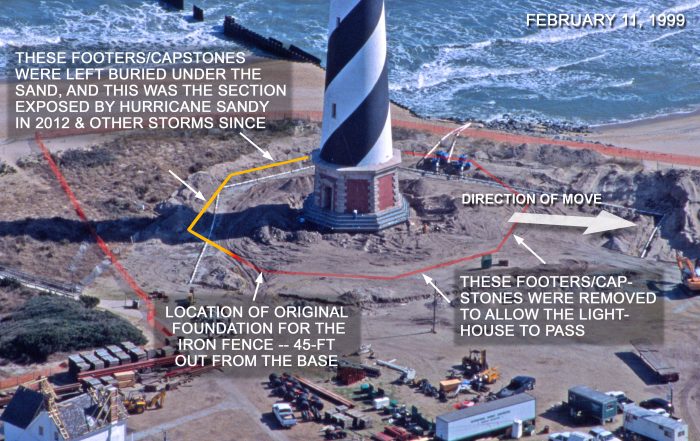
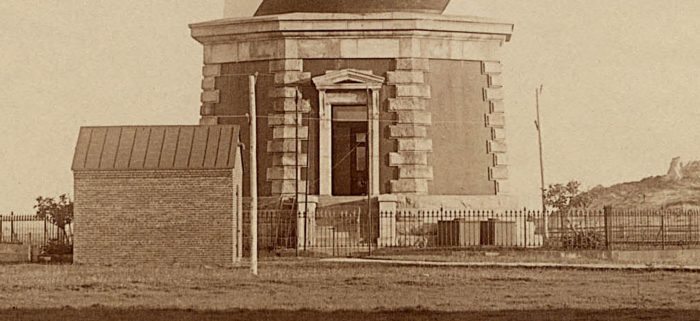
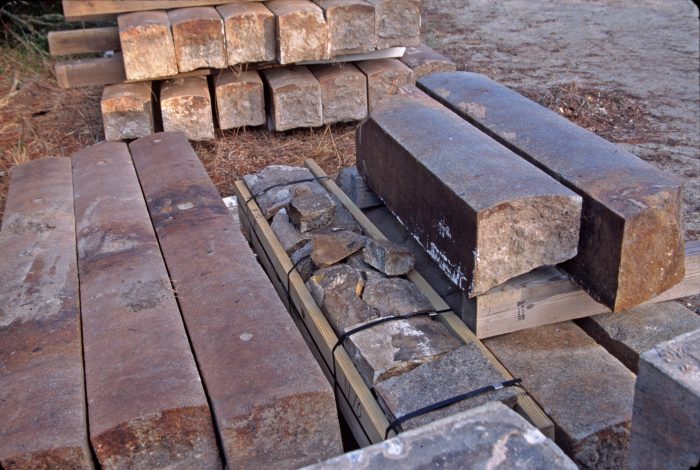

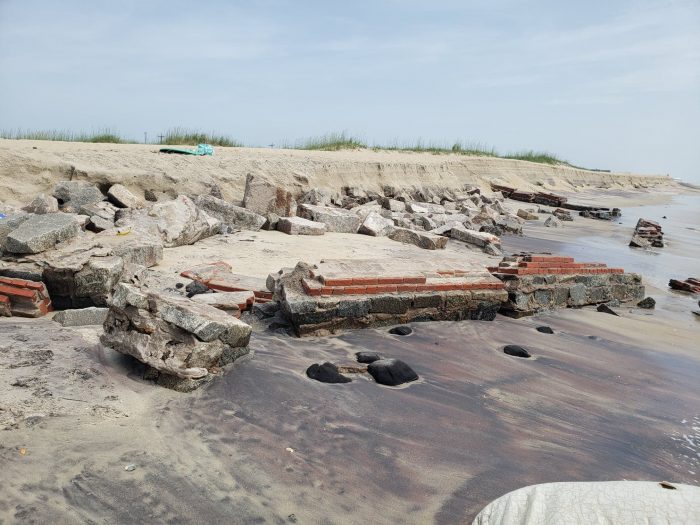



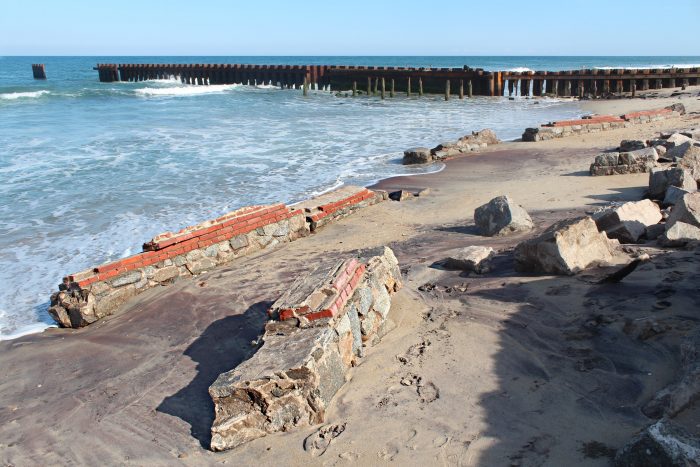
Joy, thank you! You did a wonderful! job, as usual, putting this article together in just 15 minutes or so, but one thing is that if it were not for our wonderful island historian, surf-fisherman, book author, and friend, Kevin McCabe, texting me yesterday morning, I would not even have known about this and gotten these great photos. Thank you again, Kevin!!!
I noticed a few bricks had surfaced over Memorial Day and thought it could be from the fence, but then convinced myself it could not be.